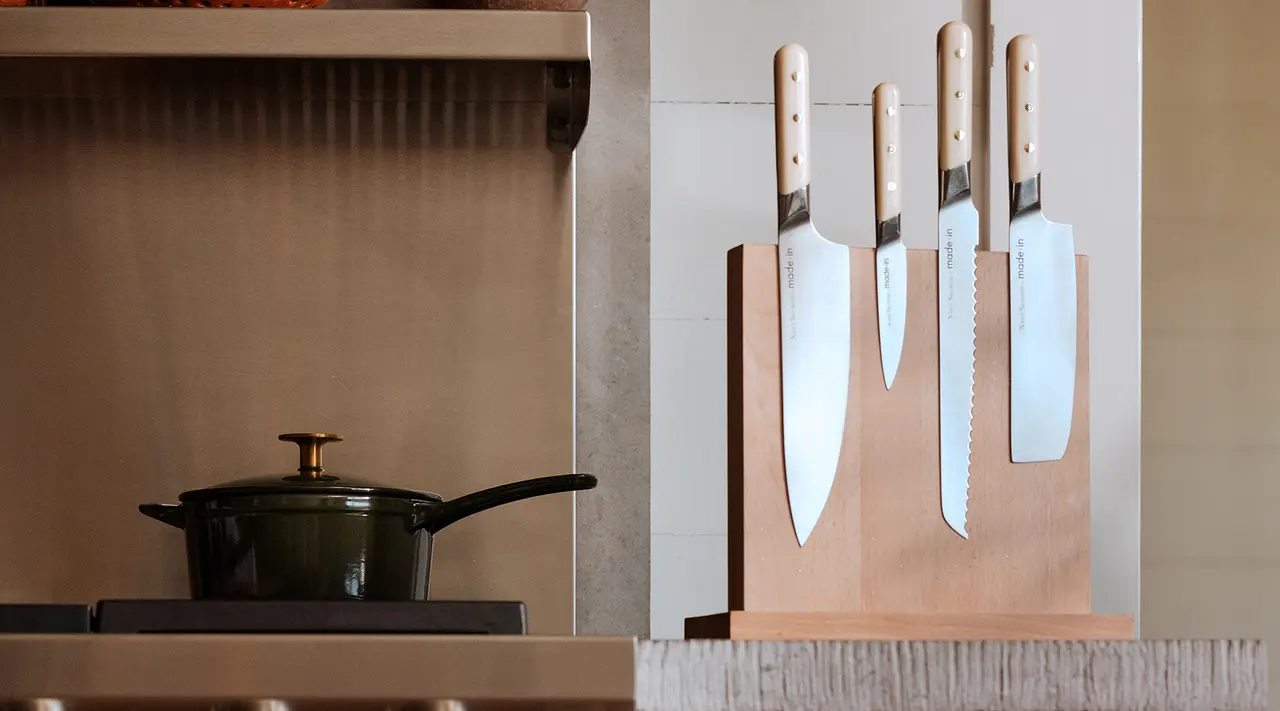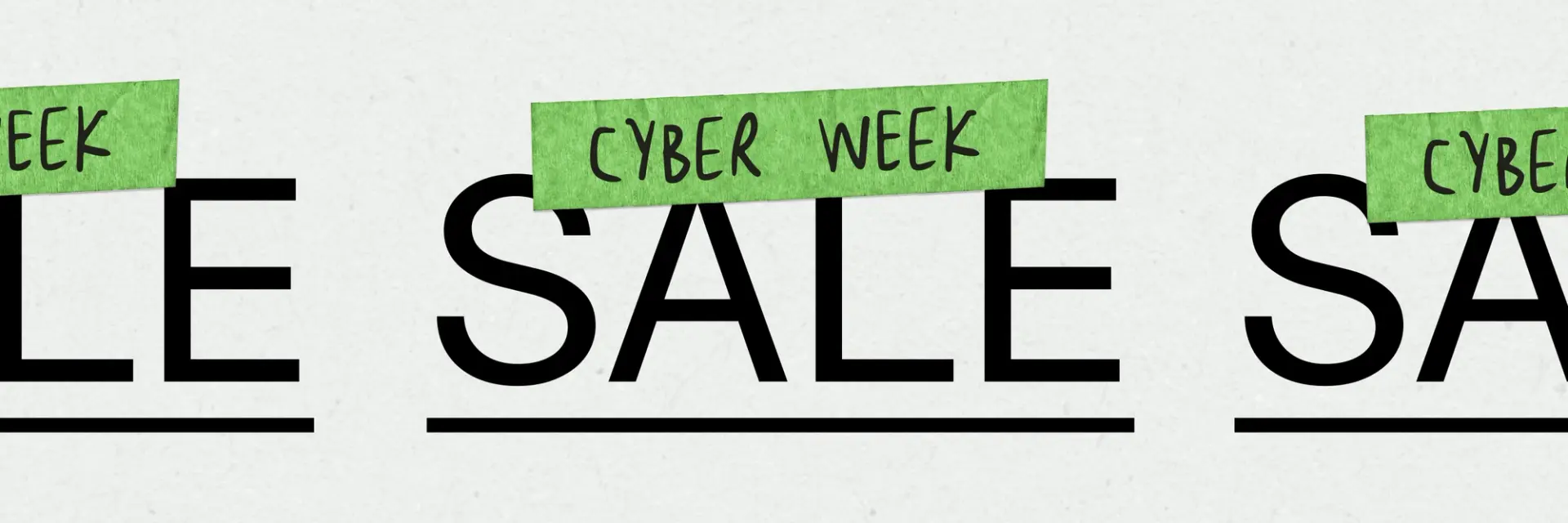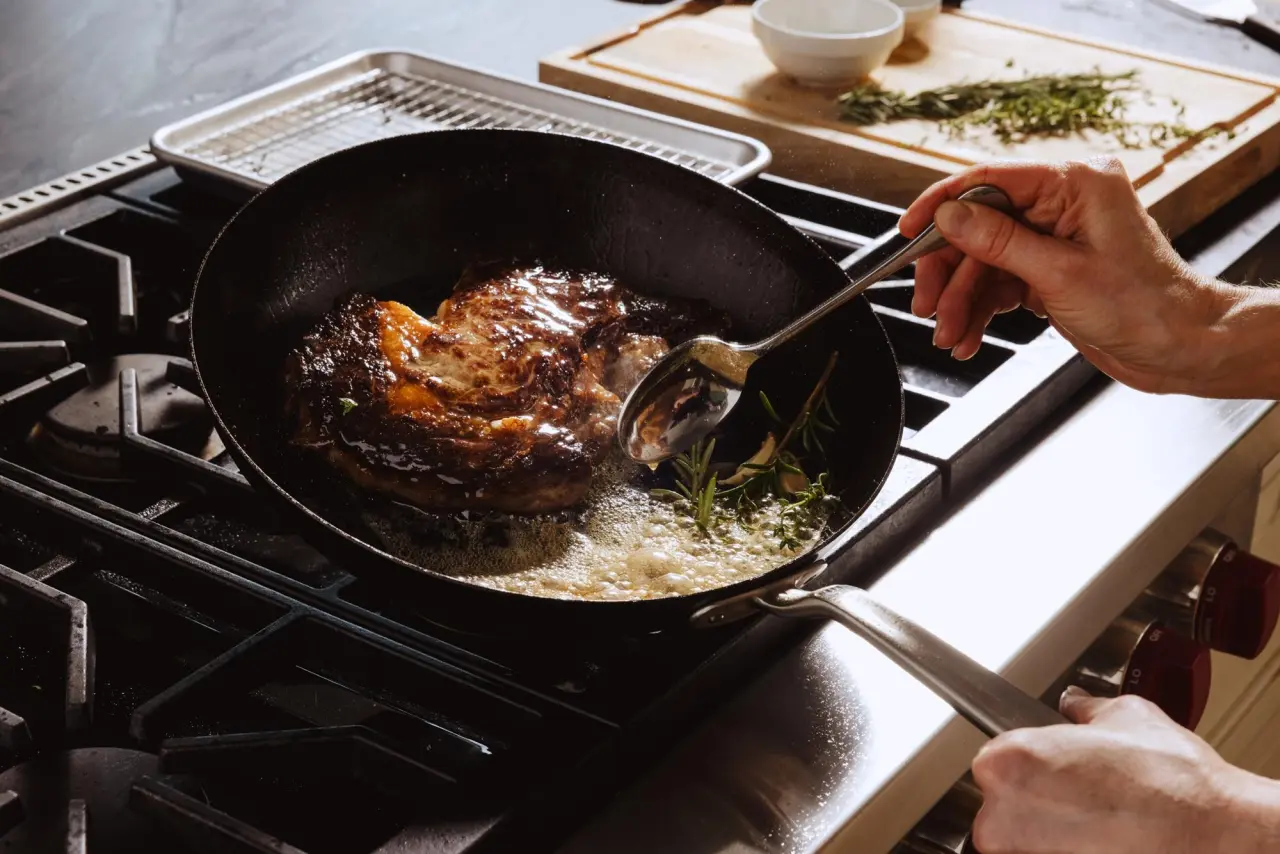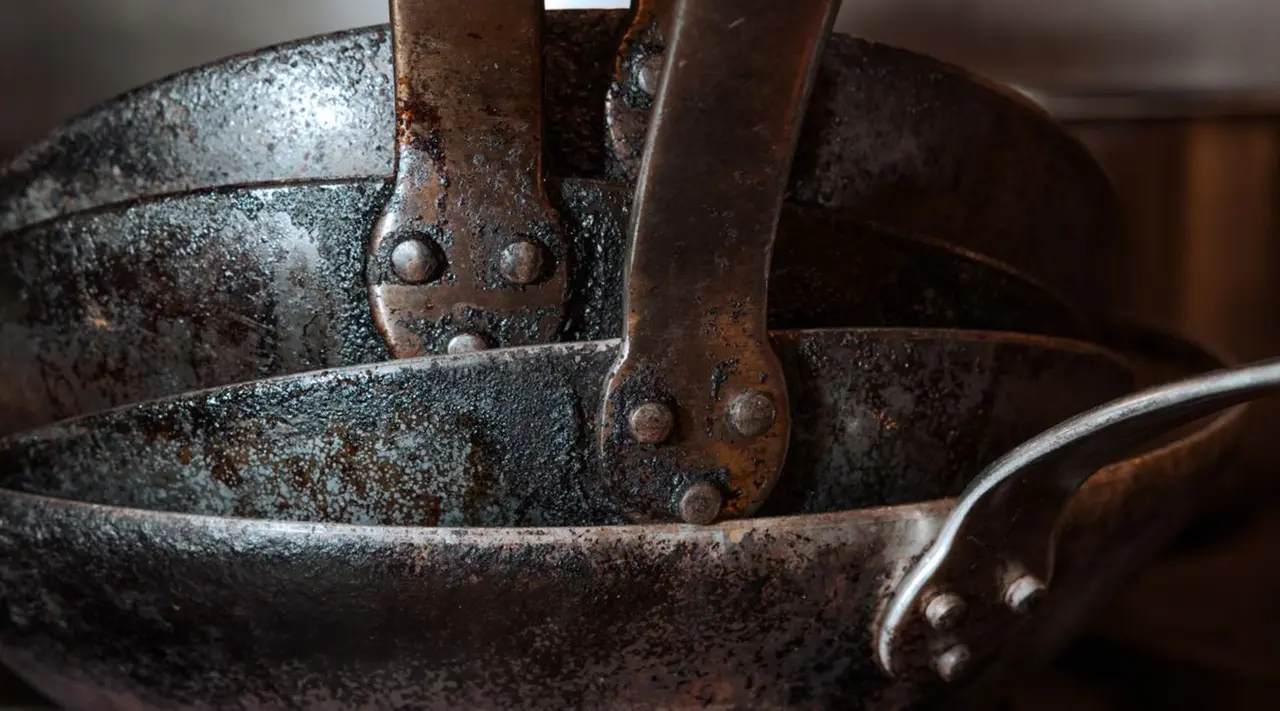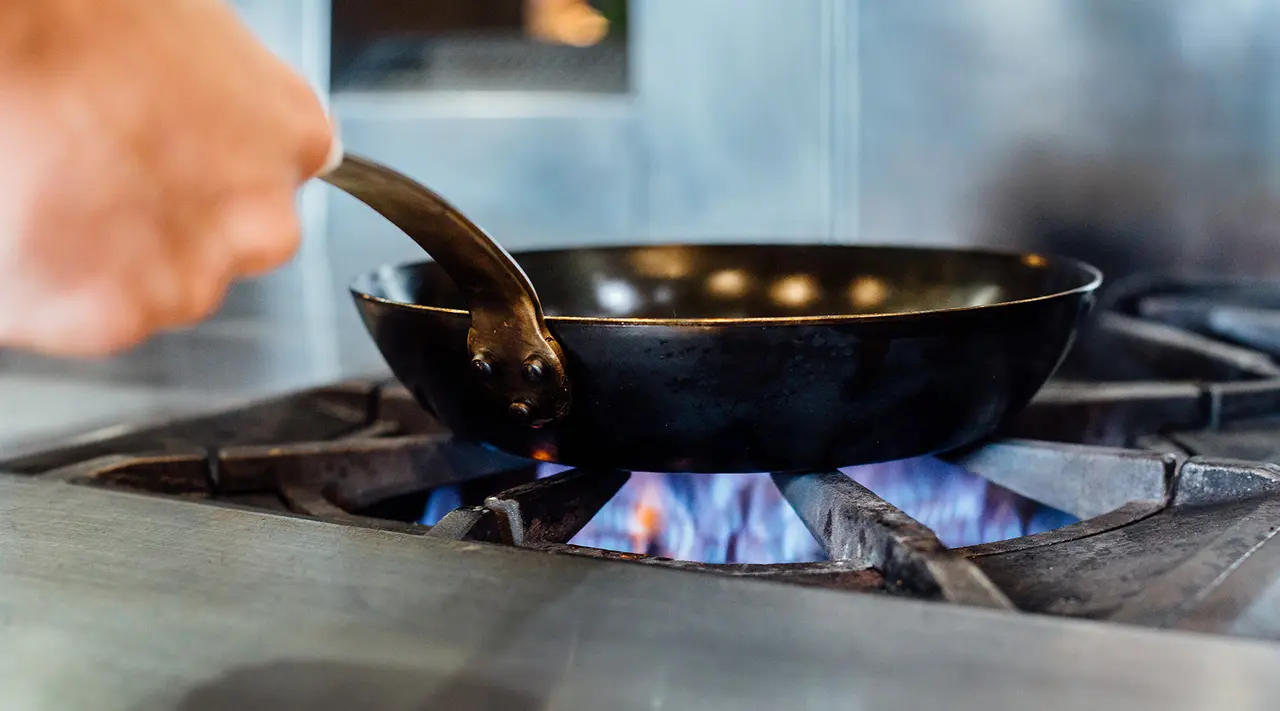A quality set of kitchen knives can last you a lifetime—but only if you maintain and care for them properly. This includes regular sharpening and honing, cleaning, and using them on the right surfaces and for appropriate tasks.
If you want to brush up on your knife care skills or to ensure your blades withstand the test of time, we’ve got you covered with this ultimate knife care guide. Read on for all of our expert knife tips, tricks, and techniques.
How to Clean a Knife
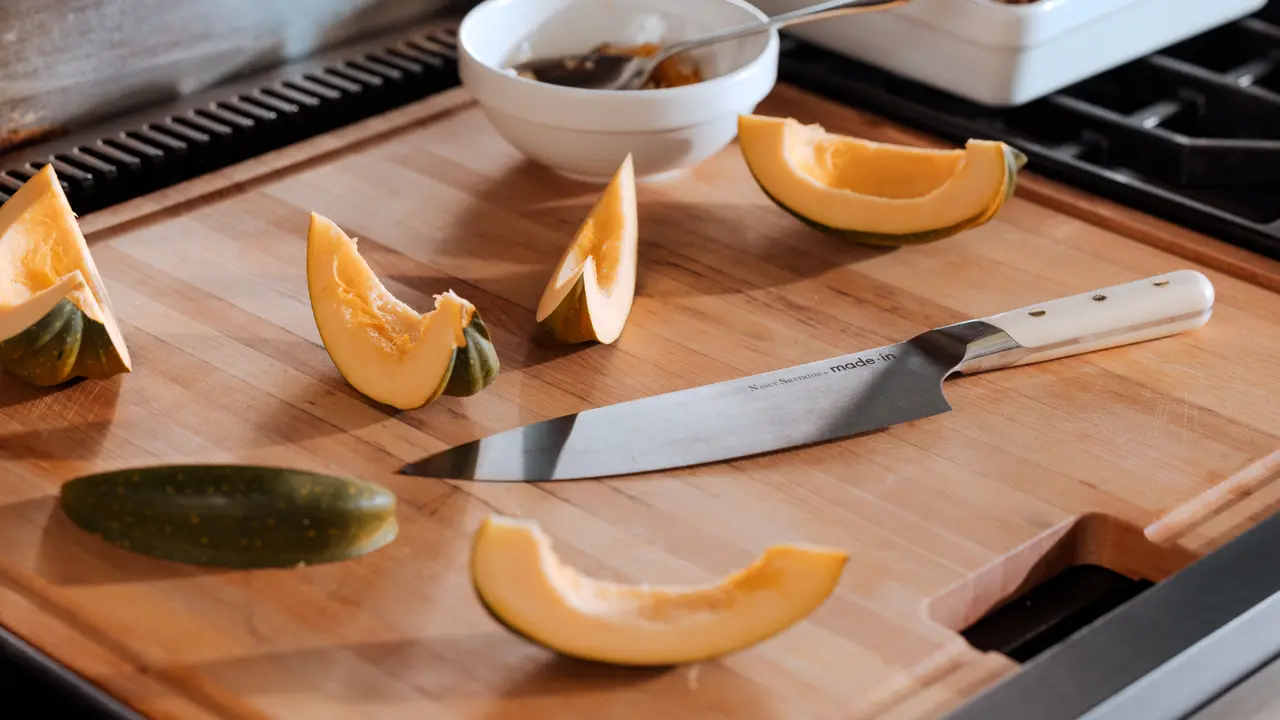
Cleaning your knives is important for both sanitary and practical reasons. If food particles or stains aren’t cleaned off of your blade, they could solidify and become difficult to remove, which can dull your blade—a huge reason why it’s important to wash your knives immediately after use.
How to Safely Clean Knives
When cleaning your kitchen knives (especially a high-quality set), you should stick to hand-washing only. The high heat and abrasive cleaners used in dishwashers can dull the blade and damage the handle of your knife, particularly wooden handles.
When hand-washing your knives, always keep the blade pointed away from you (and your fingers) and use a dishcloth or sponge with warm water and dish soap to carefully wipe each side of the blade. To do this with even more caution, lay the knife atop a dishtowel or paper towel on your kitchen counter with the blade facing away from you, and wipe each side of the blade.
Cleaning Dirty or Stained Knives
If there are any particularly stubborn food particles stuck to the blade, the best course of action is to soak the knife for a few minutes in a mixture of hot water and dish soap. While it may seem easier to scrub until the food comes off, aggressively scrubbing the blade could lead to you accidentally cutting yourself. To be safe, soaking the blade for a few minutes is usually enough to loosen up the particles and make them easy to wipe off without incident.
Once your blade is shiny clean, carefully wipe it dry to prevent water marks from staining the metal. Put it back in its proper storage spot (be it a knife block, drawer, or in its sheath) and you’re ready to go for next time.
How to Sharpen Your Knives
Even knives that are crafted in a fifth-generation French (like ours!) get dull with use—though low-quality knives will dull much faster than high-quality ones. In order to keep your blades sharp and ready to slice, dice, or mince, it’s up to you to both hone and sharpen your knives.
Honing vs. Sharpening
Honing is used to maintain, straighten, and realign the sharp edge of your knife, which can bend and warp over time and with frequent use. This differs from sharpening, which removes tiny fibers along the edge of your blade, essentially shaving it to create a new edge. Honing can be done much more frequently than sharpening—up to every time you use your knife.
Knife sharpening and honing can be thought of like taking care of your teeth. Honing is like brushing your teeth—do it often. Sharpening is like going to the dentist—twice a year should do.
Check out our guides for step-by-step instructions on sharpening your knives using a whestone or electric sharpener, as well as how to use a honing steel.
Why are Sharp Knives Important?
A common turn of phrase is that a dull knife is a dangerous one—this is true. Since a dull knife has less “grip” than a sharp one, it’s more likely to slip while you’re slicing, potentially injuring you.
You are also likely using more force to get the blade through and if it slips, all of that force could end up going directly into your hand. It’s better to be safe than sorry and keep up with knife sharpening and maintenance for this reason.
Knife Sharpening FAQs
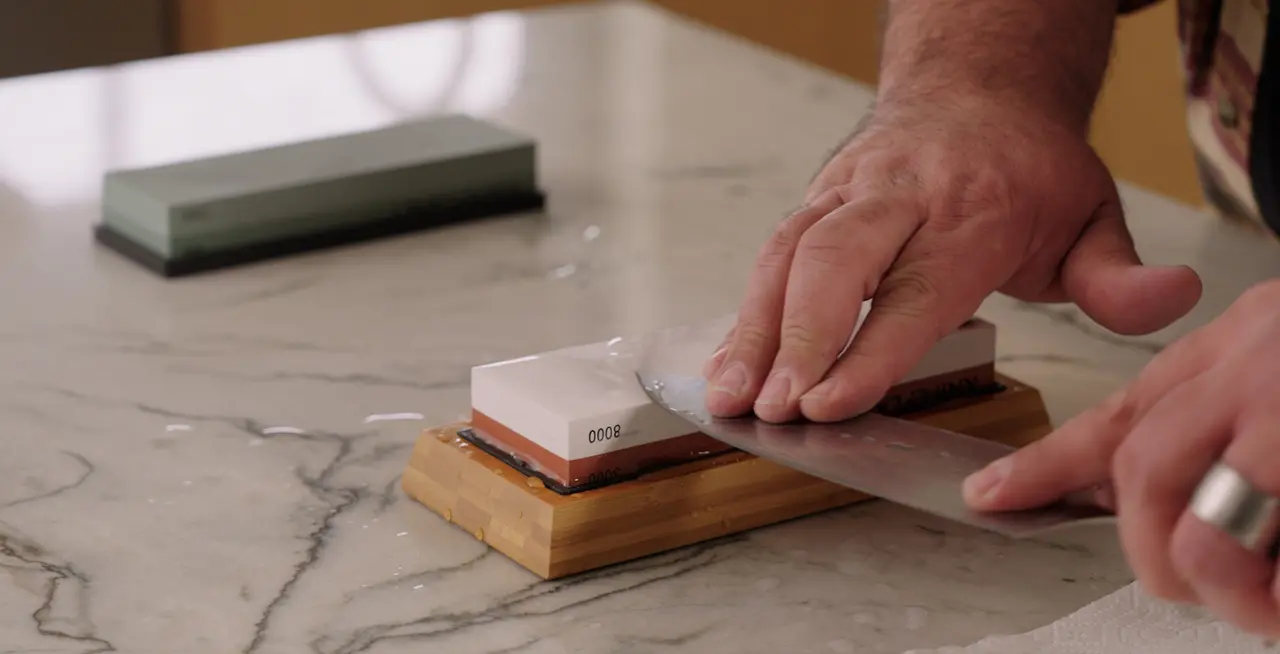
Since we receive plenty of questions from customers who want to make sure they’re taking the best care possible of their knives, we compiled answers to some of most-frequently asked questions so you can stay in the know about knife sharpening before you even make your first cut.
What Is the Ideal Knife Sharpness?
In general, knife sharpness relates to the angle of the blade—the more acute the angle, the sharper the blade will be. In most cases, the ideal degree for a knife will be between 15 and 30 degrees. Eastern knives are typically sharpened to 15 degrees, while Western knives are typically sharpened to 20 degrees.
High-quality knives will come out of the box at the right angle, so you won’t have to worry about the angle as you start slicing. Once time comes to sharpen, follow the angle recommended by your knife manufacturer.
How Do I Tell When a Knife Needs to Be Sharpened?
You can generally tell that your knife needs to be sharpened if it fails one (or both) of two tests: The paper test and tomato test.
- Paper Test: Hold a sheet of paper in the air by one end. With the other hand, carefully slice through the paper. If your knife isn’t able to slice cleanly through the paper, it likely needs to be sharpened.
- Tomato Test: Slice through a tomato on a cutting board. If the knife isn’t able to easily pierce the skin of the tomato, then you have a dull knife on your hands.
Can You Over-Sharpen a Knife?
Since knife sharpening requires shaving a microscopic amount of metal off the edge of your knife—effectively revealing a new blade—it's worthwhile to wonder if it's possible to over sharpen and remove too much off the edge of your blade.
If you’re concerned about this, don’t be. With regular honing and once- or twice-yearly sharpening, the odds of you damaging your knife from over-sharpening are extremely slim. If you want to be extra cautious, you can always take your knives to a professional sharpener rather than doing it yourself.
Knife Usage and Storage Tips
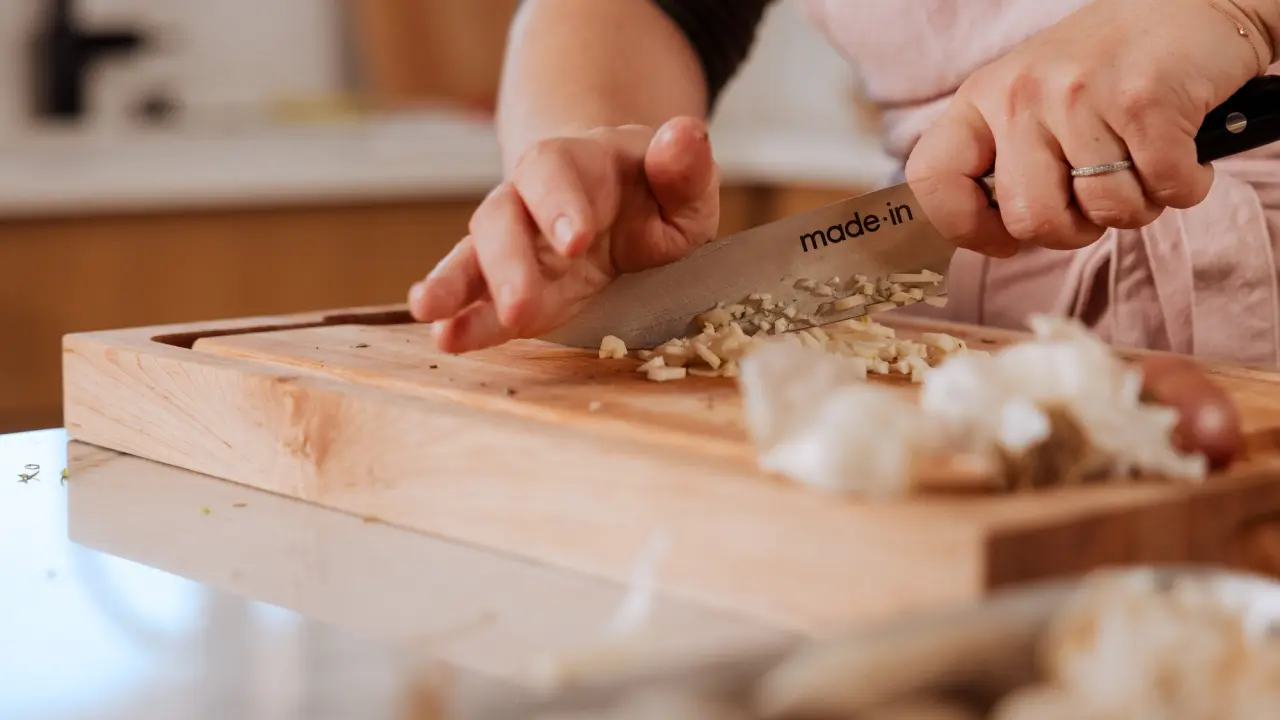
To keep your knives in fighting shape for the meany meals to come, here are some additional tips we've learned.
Use Knives on Correct Surfaces
When you’re in a rush and need to quickly slice an apple or block of cheese, the last thing you want to do is drag out a cutting board and have another dish to clean. It can be so tempting to do your cutting on a plate, paper towel, or right on your countertop—but what surface you cut on does make a difference.
Your knife will dull much faster if you’re cutting on hard, abrasive surfaces like a stone cutting board or granite countertop. Resist the temptation and get out a wooden butcher’s block or plastic cutting board instead—you’ll thank yourself later when you’re not sharpening your knives every two months.
Store Knives Correctly
Storing knives the right way is also important to maintain their sharpness—if they’re loose in a drawer with other knives and flatware, the blade can become dull or damaged, not to mention it easier to sustain an injury when reaching for something else.
Luckily, there are a number of ways you can save space even in the smallest of kitchens while still storing knives correctly.
- Plastic sheaths: The sheaths that many knives come in help protect the blade and allow them to be stored in a drawer, without fear that the blade will be damaged (or that you'll nick your fingers on stray blades when you open the drawer).
- In-drawer insert: These keep your knives together and at the ready in a drawer, without taking up counter space like a knife block.
- Knife block: That said, if you have counter space to spare, a knife block is a classic storage solution for a reason—each knife is readily accessible and ready to be showed off.
- Magnetic wall strip: This is a great storage solution for anyone with limited counter and drawer space while still keeping your knives accessible.
Ready to Chop?
Ensuring that you’re taking proper care of your knives can pay off tenfold when you have reliable instruments to practice knife cuts with. Investing in high-quality knives sets you up for success, but maintaining and caring for your knives properly can ensure you have knives you can count on for years to come. Our French-made blades are full tang, fully forged, and ready to handle any cuts, slices, or minces you need.
